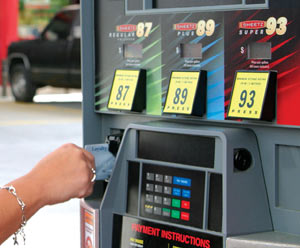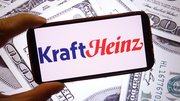Article
What price loyalty?
A new study shows that many loyalty programs are focusing too heavily on pricing, which might be having the opposite of its intended effect. What is the right way to design a loyalty program - and how do you accurately measure its value to the business?
June 23, 2005 by James Bickers — Editor, Networld Alliance
If you were to ask the average consumer whether or not he takes part in a loyalty program, he would probably say no. He's almost certainly wrong about that - a quick look at his key chain would likely reveal one or more store cards - but in the minds of most shoppers, these programs are something they must do in order to get the store's best price. They certainly are not there to reward any loyalty on their part, right?
According to a recent study by Forrester Research, that is exactly the problem with most loyalty programs: By focusing too heavily on price and discounting, they drive consumers to pay attention to all the wrong things, and often drive them right into the waiting arms of the competition.
"Consumers - even supposedly loyal ones - demonstrate that they're easily enticed elsewhere," writes Carrie Johnson, author of the report. Statistics show that few customers are "loyal" in the truest sense of the word: Very few individuals shop exclusively at one store, opting instead for whichever retailer has the best price on a given day.
De-emphasizing price
This discussion of price-cutting versus value building is certainly not new. Businesses that emphasize quality of brand or service bemoan the arrival of a "bottom-feeding" price-cutter in their neighborhood. The same conversation is taking place behind the idea of a loyalty program, and according to Johnson, building such a program primarily around price will backfire.
 |
Keep up-to-date on the latest Kiosk news. Sign up forfree, twice-weekly e-mail alerts   |
 |
"The programs clearly aren't working," she writes. "Today's loyalty programs do the opposite of their intended value Â… This is especially true when competitors offer virtually indistinguishable programs as in the grocery or office supply industries."
While using such programs to creatively trim prices might boost sales, it can have a long-term negative effect on branding. Customers caught in such a "lowest price wins" game quickly learn to ignore other positive aspects of what they are buying.
"Most loyalty programs do not venture beyond price discounts to reward more intangible aspects of loyalty that drive increased wallet share as well as overall spend, such as brand identification and connection Â… programs do not garner any emotional connection between consumers and retailers," she writes.
"Discounting as a reward is eventually a zero-sum game because you have to always discount to keep your members in the program," said Mitch Krayton, business development director for Valencia, Calif.-based 1st Kiosk. "The retail price is meaningless. Car dealers have not be able to sell volume without discounts for years because they have trained their customer to wait for the discounts. Most loyalty programs are doing the same thing for retail sales."
So if price should not be the emphasis, what should take its place?
-- Mitch Krayton, business development director, 1st Kiosk |
"The hidden strength of a loyalty solution lies in linking a consumer's first visit to the next, essentially creating a reward for returning, and an emotional bias against competitors," said Mike Finley, vice president of global product marketing for Radiant Systems Inc. "The trick, however, is to avoid spending the profit of one visit on the rewards for the next one - the operation will break even at best and consumers will react negatively when the rewards are removed."
According to Krayton, planning for the proper consumer benefit is an extraordinarily important step in loyalty program planning, and one that often gets skipped.
"Users always ask, `What's in it for me?' he said. "Users always want a benefit to change their behavior. People do want convenience but they also want courtesy, respect and recognition. Machines don't exhibit these human traits without a carefully planned loyalty program. To do that requires great UI design, professionally developed content and a lot of real user testing. This is rarely in the budget."
As a result, he said, focus turns to the things that are easily measured and put in place. It is far easier to simply slash prices than it is to study and understand your clientele; so many retailers go that route.
"At that point, you have a vending machine, not a loyalty-enhancing kiosk," he said.
According to Johnson, retailers need to be aggressive with customer surveys, exit interviews and other research tools, like secret shoppers. There are many problems that a loyalty program will never solve - poor inventory management, for instance, or bad customer service.
"The point of a loyalty system is that the customer can have a unique relationship with the store and the relationship gives the customer status and privileges that non-members don't get," Krayton added. "It is how American Express got us to pay for a credit card that others gave away."
 |
A c-store loyalty program implemented by Radiant Systems |
Measuring their effectiveness
Since many of the goals of a loyalty program are intangibles, how can a retailer know that their program is not only not having a negative effect, but in fact having a positive one?
"Measurements have to cover the full range of loyalty program activities," Finley said. "You have to know if people are joining the program, are they bringing additional wallet share to the retailer that is rewarding them, and is that added share increasing profits."
Finley acknowledges that the subtler benefits of a loyalty program are not as easy to measure - for instance, what percentage of an increase in same-store sales can be credited to the loyalty program, as opposed to organic growth? And what about the customer's emotional bond with the brand?
The best metrics, he said, are the traditional ones - "same-store sales and profitability, labor ratios and shrink," he said. "Improvements in these metrics are indisputable throughout the organization, and a lack of improvements is an unequivocal indicator of the need to modify the loyalty program."
For Krayton, the answer is a simple one.
"Count how often a person returns to use the kiosk," he said. "An unused kiosk is a failed project. Here is the key: The kiosk has to give me a better reason to use it than any other alternative available."










